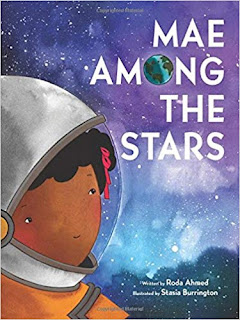 |
| https://flipgrid.com/s/c81ecb2228a7 |
 |
| Photo - https://amzn.to/2GYgR21 |
Students were tasked with using the tools within Flipgrid to retell the story using between five and ten sentences.
Once Mrs. Waters read the book to students we explored all the tools within Flipgrid to see what could be used to help us with our story retell. The emojis were very popular and we discovered a cool space helmet and career emojis that include multi-colored and gendered astronauts.
Zaria's Flipgrid (featured above) was probably the best executed. She used the blue filter tool to match the wording from the book about feeling "blue and cold". Most children did not finish in enough time. In a 50 minute block we did the reading, we brainstormed whole group a story retell, students were given some time to explore and share what they found in Flipgrid that would help with their retell, and then they recorded (we had several sound issues with the microphone ear buds that Mrs. Waters, her assistant, and I had to troubleshoot).
We got permission to keep Zaria past the related arts block so we could have one finished example to use with the other fourth grade classes.
Flipgrid allows you to download finished videos and Mrs. Waters was able to add it to her morning news show.
Comments